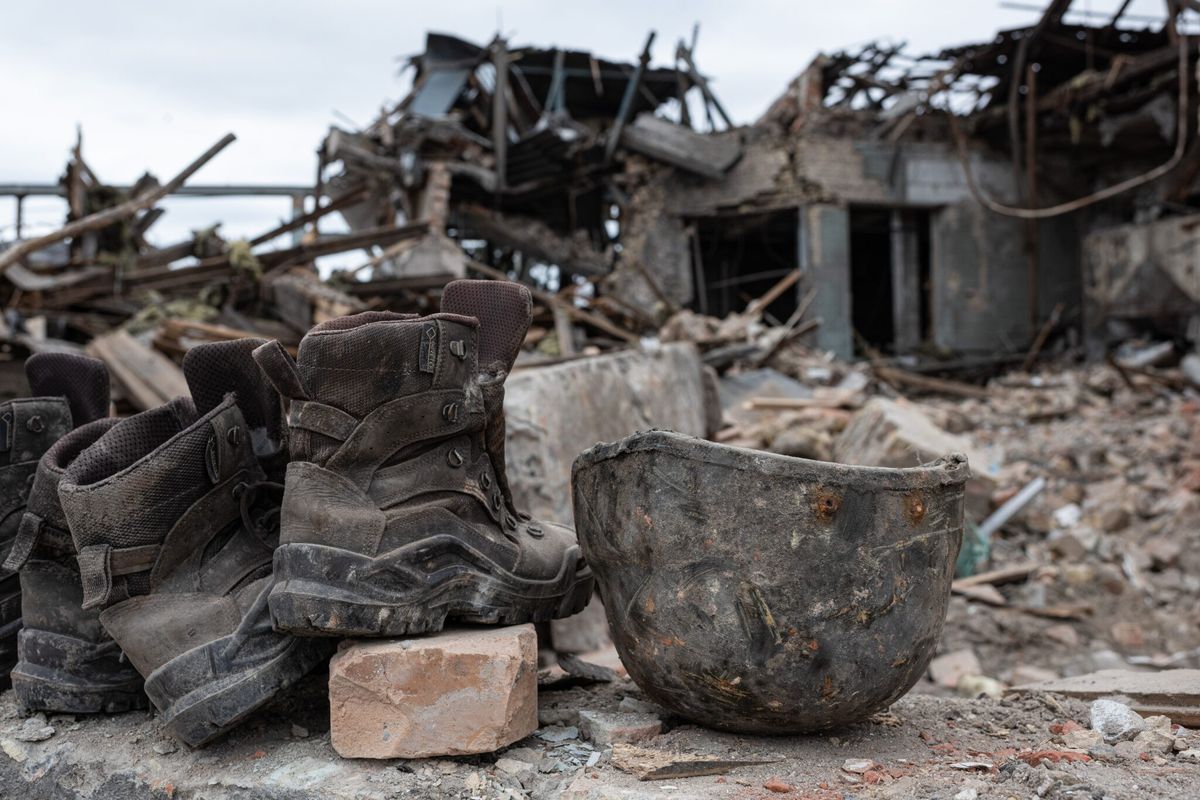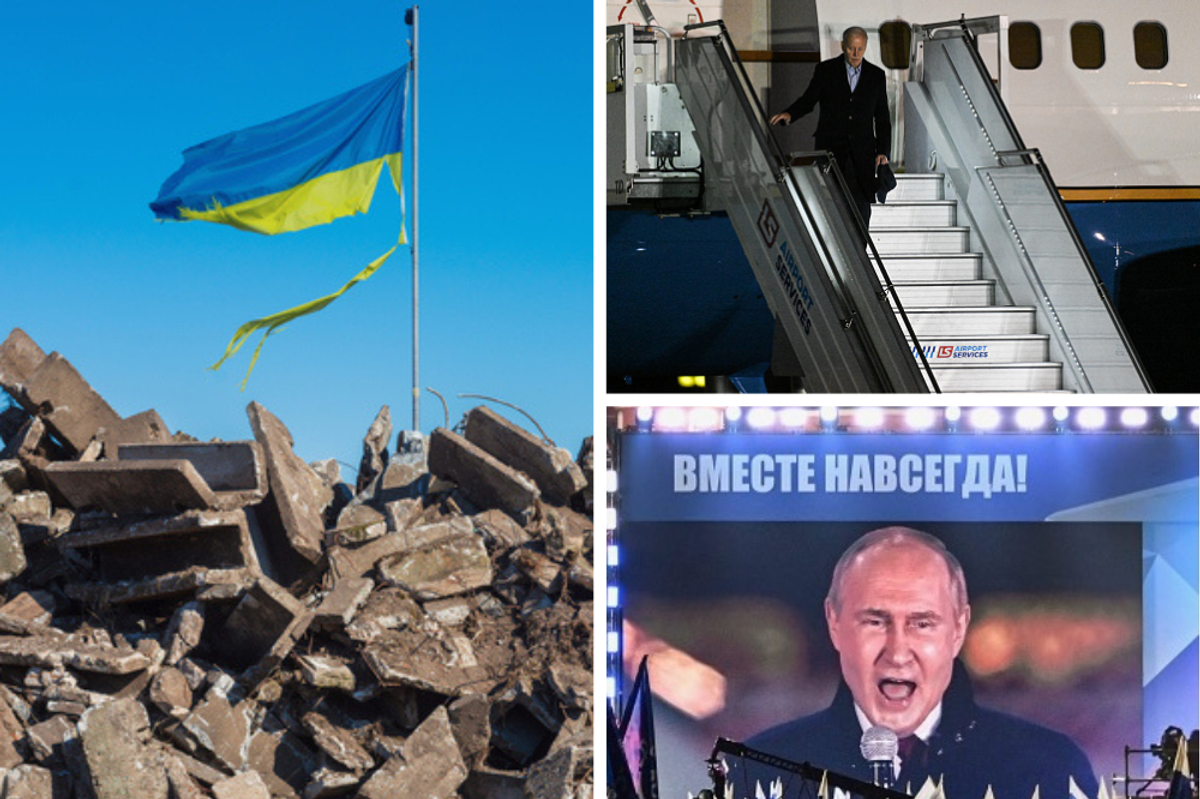Six years ago this month, almost to the day, Cipher Brief CEO & Publisher Suzanne Kelly accompanied then- Border Chief Michael J. Fisher to the U.S. Border with Mexico, seeking a better understanding of the complex geography and tactics required to patrol each section of the often treacherous divide. Back then, Fisher’s most immediate concern was terrorists coming into the U.S. Even then, Chief Fisher candidly shared that there was no way to completely secure the border.
Around the same time, the then head of SOUTHCOM, General John Kelly, who now serves as President Trump’s Chief of Staff, was busy making a case to Washington policy makers that they needed to pay closer attention to transnational crime routes leading to – and across - the U.S. divide. Kelly wanted Congress to see what he was seeing – concerning activities along traditional crime routes that could be easily infiltrated by terrorists.
Today, amid the Administration’s controversial immigration policies, construction of a border wall and a crackdown on sanctuary cities, U.S. Attorney General Jeff Sessions is pushing a zero tolerance policy on illegal immigration. But just how realistic is it?
Cipher Brief Expert and former Chief of the U.S. Border Patrol, Mike Fisher talked with The Cipher Brief’s Brad Christian about why a zero tolerance policy might be nice in theory, but is practically impossible to enforce. Here’s why.
Christian: What was your reaction to Attorney General Jeff Sessions’ announcement of a zero tolerance policy?
Fisher: There was a program that was started years ago, where we tried this under previous administrations. The challenge, if you want to prosecute everybody for illegal entry is the federal court systems. Even though the numbers are down now, let’s just say on average that Border Patrol Agents are apprehending say, 500 people a day, the Marshals Service, which does the intake, doesn’t have the detention space to hold them, so we do not have the capacity to be able to do that. It’s a good concept, but not realistic when it comes to the practical application over time. Also, there are always going to be exceptions to prosecution. And it’s not just the prosecution necessarily, it’s because often times the courts are backed up and you can’t detain people for an extended period of time, for a variety of reasons, under the current immigration law, so it ends up being a glorified administrative process, where the people are formally charged under the federal statute, but released to their own recognizance. For the Marshals Service, it’s also a lower priority compared to all of the other felonies and federal charges within their jurisdiction. That sends a signal to the U.S. Attorney’s office which otherwise would not accept those cases for prosecution. So if they do accept those cases for prosecution, it comes down to what is the through-put of the system for detention and getting the cases on the docket and in front of a judge. And then what do you do in terms of sentencing? In the case where you have a first-time entrant, with no prior convictions, who was coming across to seek a better life for their family- what is the right sentencing for that? So I think it sends more of a signal that we are getting back to the rule of law, and we are going to start enforcing the immigration laws, but when you look at it practically, they are going to reach a limit in their capacity to do that.
Christian: That’s a really interesting point, especially since the Attorney General specifically said, “You will be prosecuted”. The Border Patrol Officers don’t have a lot of down time. I read today that the Department of the Interior is sending officers from the National Park Service to augment Border Patrol. The U.S. Military has also been called upon to assist, in a supporting role. So two questions: Is this enough? And how long can we sustain this level of support for Customs and Border Patrol?
Fisher: Some of this has to do with sending a message about how serious this administration is taking border security, and really trying to reverse the previous administration as it relates to border security and prosecution. I’m not saying that as a pejorative, I just think some of it has to do with “we are really serious about this”. In truth, the Park Service, the Department of the Interior and Bureau of Land Management have been, and are in those locations where they have jurisdiction. Think about the National Parks, Arizona in particular. 70% of the border is government-owned land, so they typically have a law enforcement presence within those departments. So it’s not like we are just starting to work together. We’ve done a lot of integrated operations with the Park Service, and others. By the way, people often think about Operation Jump Start where in 2006 we were doubling the size of the organization and the administration brought in up to 6000 National Guard troops for 2 ½ years. And that was designed to be a bridge to give us the opportunity to hire, train and deploy 6000 agents in 2.5 years. So people think of those types of large deployments and may say “Oh my gosh”. What people may not realize is that in between those large deployments, including the most recent, the National Guard has been on the border assisting with National Security and Border Security missions. Engineers are down doing road improvements throughout the year. As a matter of fact, there is an entity on Biggs Army Airfield which is a sub-command of USNORTHCOM up in Colorado Springs. And it’s JTF North. JTF North is specifically funded to support civilian law enforcement, and the vast majority of that support is with the Border Patrol, doing missions on the border. So this is an op-tempo that happens all the time. And this current deployment is going to be the same type of thing. A question I hear a lot is, “Is this needed or not”?
My question has always been “What is the end state”?
There is a broader discussion about the President’s January 25, 2017 Executive Order. He stipulated what the end state is, but the question is- How do you know when you get there? How do you know when you are close to and can measure, and are winning when he says he wants to achieve “complete operational control”? That’s a larger discussion on how you measure that, and what should be measured. But right now, they are just in the activity mode, where doing things gets people excited and communicates ‘we are taking things seriously’. And that’s what you’re seeing here, that’s what the wall was, that’s what the National Guard deployment is, that’s what all of the talk of prosecution is with the Attorney General. This is a message saying ‘this is important to us’. Border Security was a fundamental platform early and often with the administration. I think coming up to the mid-terms, they want to make a stance that they are going to be strong on border security.
Christian: So, I think clearly this message is having an impact here in the U.S. Do you have any sense that this message is having an impact across the border in ways that are helpful to that end state?
Fisher: Absolutely. If you just look at the entries and the apprehensions six months before and after the elections, as some media have reported, those numbers have gone down. I continue to be an adjunct with the Institute for Defense Analysis and we have studied this for a long time, and what is interesting is that policies do have an effect, and a correlation with the flow rates into this country. If you look at the numbers right now, it’s the lowest rate, I think, since 1972. So the flow rate is down.
The other thing that is different, was about this ‘caravan’ that the media was tracking. This happened not too long ago and in fact I think they are still adjudicating some of those cases at the San Diego port of entry. What’s interesting is that back a couple of years ago, we first started to see a real increase in the number of women and children coming in from Central America. We didn’t call them caravans, which is a really good buzzword for the media but in the summer of 2014, we first noticed a real increase in the numbers. What was happening then was they were coming across in between the ports of entry, and the border patrol agents were apprehending them, and processing them, which distracted from the primary border security mission. Today, what they are doing is taking themselves to the port of entry. And the reason is they are now following the law, to improve the chances that they will get an affirmative, adjudicated case for political asylum. The moment they come into this country illegally, it’s almost impossible for them to make that legal case. So the NGO’s have learned. They’ve always known what the law is, but what they are now doing is changing the manner in which these people are presenting themselves for these applications. And they are doing it because they know that this administration is going to enforce the law. So I’ve seen that change, in terms of a change in policy and how that affects flows into this country at the ports of entry.
Christian: Focusing on the criminals and cartels a bit, how are they now using technology to accomplish their mission and how is the U.S. using technology to combat them?
Fisher: Three things come to mind. First, information is more valuable today than it was five years ago within DHS, and specifically within Customs and Border Protection. It’s not a problem of collecting it, it’s a problem of analyzing it and using it to drive operations. We knew that then, but we are still behind the curve on it. And by the way, David Glawe, the current Under Secretary for Intelligence and Analysis for the Department of Homeland Security (DHS) is ramping up analytical capability. I think often times that’s the one piece that people take for granted. Now, you’ve got these huge companies like Google that manage that, but all of us are just using iPhones like we never thought possible and we don’t even think about how do you manage all that? This whole thing about data and capability is something that I think the Department is looking into right now to help drive future operations, that’s the first piece.
The second is the advancement of technology as its being applied in unlawful ways. The use of that technology is outpacing our ability to think about and understand what the policy implications are and what the policy should be. I’ll give you a good example: the first time we saw this when I was still in, was when the smugglers started using cell phones on the mountaintops in Arizona to direct smuggling organizations as they were trying to evade border patrol agents. We couldn’t come to terms as a government between NSA and CIA and DHS, about what we could or couldn’t collect off of a foreign national, illegally in the United States, with information bouncing between a tower in Mexico and in the United States. Whether we could DDF it – detect direction and find – or whether we could under title three, listen in on those conversations to figure out who those people were. I think we still haven’t figured that one out. Now you fast-forward and we’ve started seeing Ultralights come across the border. And what about the use of force? What can we do to stop them? The best we were able to do was give them an armed escort back south with a UH60 Black Hawk helicopter because after the first time, when they started landing and we were apprehending them, they just changed their tactics, techniques and procedures and they would fly across at a higher altitude and just never land. They would just drop their bundles and fly back south. We didn’t have a policy that laid out whether we could shoot them. So that was a policy thing and the threat still continues. What we’re dealing with right now is the next generation which is the small, unmanned, aerial systems. And it’s not just DHS, these are police departments grappling with this. Today, all you have to do is call Amazon and within 24 hours a drone is delivering sneakers to your front door. Everyone thinks that’s great and it is, but 18 hours later, some bad guy is figuring out how to exploit that technology for illegal purposes. So how do we – as a government – stay ahead, not just with the technology to defeat it, but with the policy, in a way that is consistent within our Constitution? In some of these environments the end state driven by the technology solution – has worked very well with the military, but in civilian law enforcement, a kinetic ending is not acceptable.
Christian: We recently spoke with Dr. Michael Vickers at The Cipher Brief Threat Conference and I asked him whether the military – in particular – special operations teams – could keep up with the pace of operations while still preparing for the next threat. The answer was a little troubling: that we have some gaps there. It seems like the threats from technology on the law enforcement side are advancing so fast that we also haven’t been able to get in front of them.
Fisher: Certainly the technological advances are happening at a pace that even if you had a small, nimble organization that could move quickly and make policy changes and considerations – the adversaries that run these networks – they’re always changing. When you’re looking at broad policy determinations and you’re looking at law enforcement, you’re talking multiple jurisdictions. It’s not just like one military, so the Department of Homeland Security and their Science and Technology division, has been researching these counter-drone capabilities and they have certain specifications as it relates to the federal space and the type of customers like ICE and Border Patrol that will be using these. Then you look at what the Texas Rangers just put out about two weeks ago on a requirement for the same thing, counter-drone technology, but their requirements are totally different. So you have state law, you have federal law and there’s not one overriding policy consideration that will take care of all of it.
Christian: What worries you most today about what’s going on at the southern border of the United States?
Fisher: The fact that we haven’t been finding tunnels at a very high frequency lately. That’s probably first and foremost. When we’re all of a sudden ‘not’ catching narcotics in a particular area, and some people think well, we finally beat them. I’ve always been of the opinion, well, they’re beating us, we just haven’t figured out how. When was the last time you heard about a large cocaine seizure along the border? It’s been a long while. You know the Coast Guard will seize something and they’ll have a media event, but if you take a look at what is actually seized at the ports of entry, and then you compare that with consumption rates in the United States, there’s a huge delta. It’s getting in somewhere. So, I just don’t think they’ve stopped building tunnels. I remember the last one. I was in San Diego at the time and that one was 80 feet deep. What the cartels used to do was hired a bunch of people to dig a hole and it wasn’t very big at all, maybe 100 meters and once that tunnel was done, they took all the people who were working on that and they killed them and their families in order to keep everybody quiet. Then you fast forward to when the cartels changed their tactics and hired some of the best engineers in the world and they realized it was a lot easier to buy silence than to get it through intimidation. They’ve been getting better and better at subterranean threats. and our capability to detect it in a traditional way with ground penetrating radar, all the things, and the government to my knowledge, doesn’t have a program whether its across Department of Defense or within Department of Homeland Security – I think DHS and CBP in particular is moving forward with the very first program of record for subterranean threats of tunnel detection. Up until this point, it’s been one of those things that’s out of sight, out of mind, so that’s one thing I still just don’t think we’ve fixed yet. I’d love to be proven wrong.












